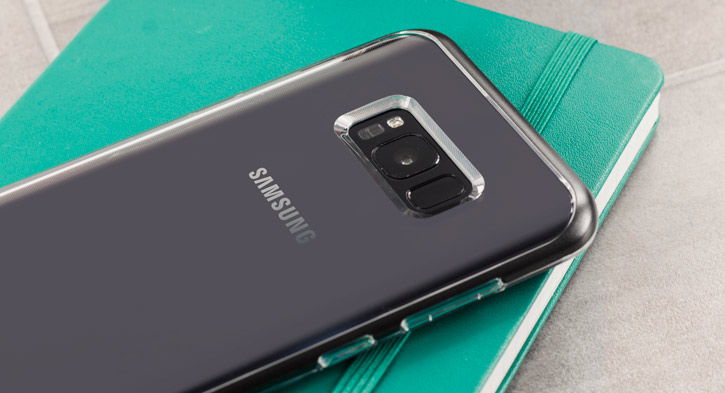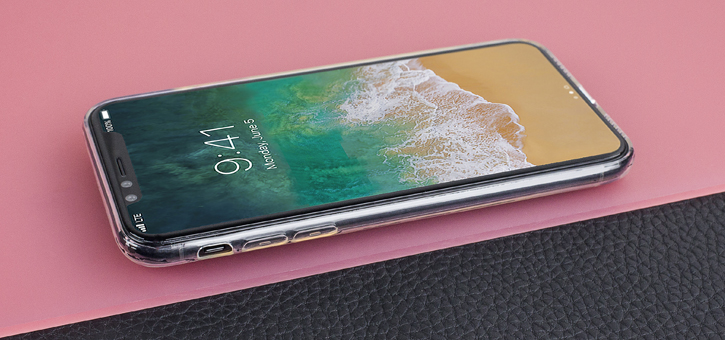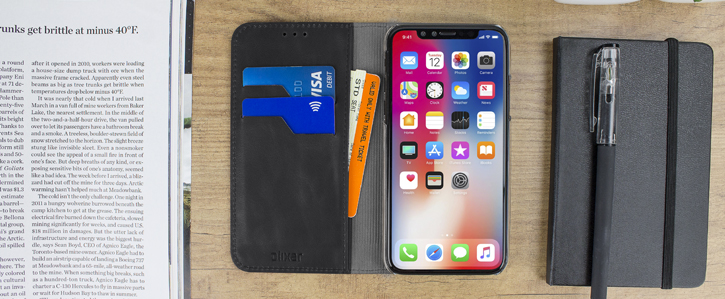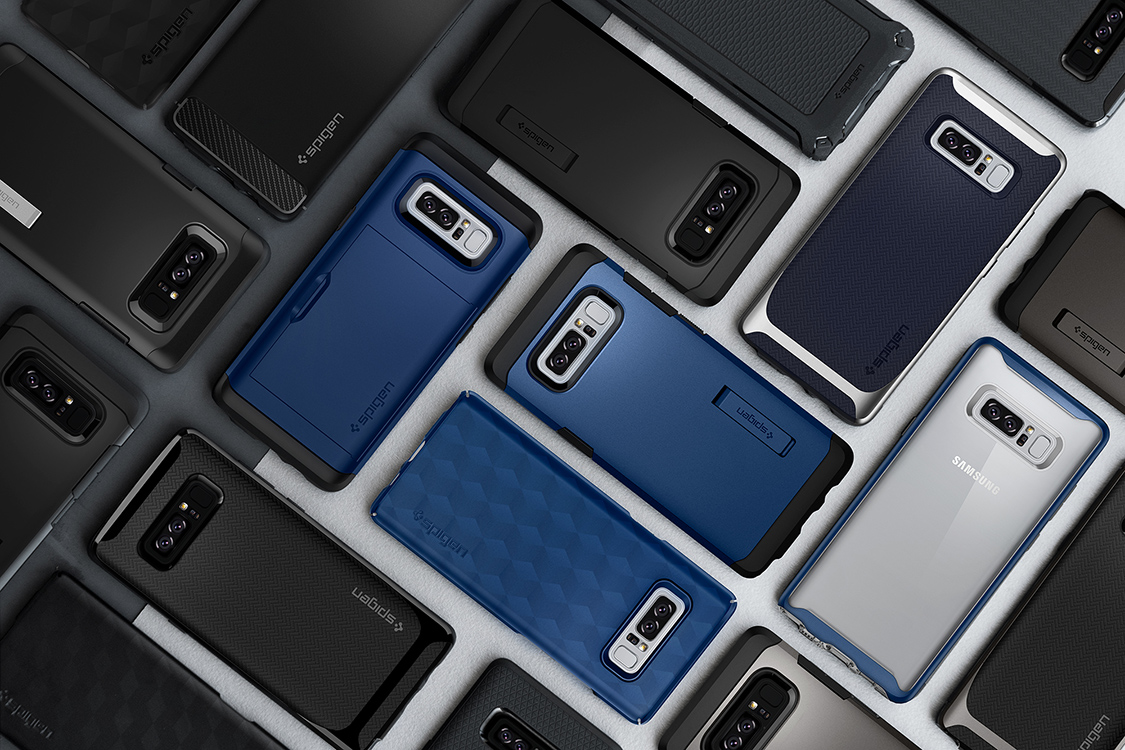When it comes to buying a case for your phone, there are a few things you should know. In this buying guide, we’ll cover different form factors, what materials are commonly used, various added features and brands to look out for. Let’s get right into it!
Form factors

One of the most important decisions you’ll make when buying a case is choosing the kind of case you want — its form factor. Here are some of the most common options available:
Standard: these cases protect the back and sides of your smartphone, while leaving the screen fully accessible. Sometimes, a raised lip will surround the screen to protect it from taking a direct hit. This simple design is the go-to option for many users due to its light weight, good protection and accessibility.
Bumper: this minimalist case often leaves the back of your phone exposed, but includes shock-absorbing materials around each corner to prevent damage. Sometimes, bumpers will have thin or transparent backs, just to complicate things. Bumper cases tend to be light weight but offer limited protection.
Tough: these cases emphasise protection over style, and are often constructed from multiple layers of different materials for maximum effect. As well as protecting from drops, knocks and scratches, some tough cases include specialised defences against water or dust ingress, and as such come with an IP rating, like IP68. The first number is usually six, which corresponds to complete dust resistance, and the second number is usually seven or eight, and means that your smartphone is protected against immersion in water. Be aware that this protection only extends to certain depths and for certain times, e.g. up to one metre for 30 minutes.
Folio: as the name suggests, a folio case acts like a book, covering the back and sides of your phone with one part and covering the screen with another. These cases are fairly bulky and don’t allow rapid access to your phone’s screen, but make up for it with excellent screen protection and room for other features such as card slots or stands. Folios are sometimes called wallet or flip cases.
Pouch: The pouch is unique in that it completely envelops your smartphone on all sides. That makes it quite protective, but also requires you to remove your phone from the pouch before it can be used — and normally, such use is where damage from knocks or drops can occur. Pouches needn’t be made to suit each individual smartphone, so you can reuse one pouch for multiple smartphones of similar size.
Materials
Smartphone cases are commonly made from plastic of various kinds, but other materials can also be found. Here are some of the most usual choices, and what they mean:
Silicone / Gel / Rubber: These soft and flexible materials go by many names, but they are generally cheap to produce, provide moderate protection and usually add grip to prevent accidental drops.
Polycarbonate / TPU: These are the most common plastics used in smartphone cases. Polycarbonate offers good scratch and impact resistance, while TPU is a little softer and less ideal for impact resistance. Multiple layers using both of these materials tends to provide better protection than you’d get from a single layer of either. These plastics also allow for more intricate and sophisticated designs than silicone.
Leather / leatherette: Leather or leather-style materials are another common choice, particularly for folio, flip and wallet-style cases. They tend to wear more nicely than plastics, but tend to be a bit bulkier on average than plastic cases. Within this category, genuine leather cases tend to cost more than cases made with synthetic leather alternatives, but both offer a classic look and feel.
Aluminium: Metals are less commonly used in smartphone cases as they have a tendency to affect wireless signal strength, but through clever engineering (or the use of multiple materials) it is possible to avoid this drawback. Aluminium alloys are a common choice, offering excellent rigidity and scratch protection, but perhaps less impact resistance than a more flexible material.
Wood: Wood isn’t commonly used for smartphone cases, as it is costly to produce en masse. Its inflexibility also means multiple pieces or adhesives must be used to attach it around your phone. However, it does provide a unique look and feel, with decent protection as well.
Features
Cases are not only for protection or looks. They can also include any number of added features, allowing you to do new things with your phone. Here are a list of common features to look out for.
Wallet: a wallet case is one that includes card slots and/or pockets, allowing you to keep ID, credit cards, tickets and other important pieces of paper or plastic close at hand. Folio cases commonly include wallet functionality, but you can also find cases with concealed card storage on the back side.
Battery: the combination of a portable charger and a case is simply called a battery case. It’s a way to extend the battery life of your smartphone, augmenting its (perhaps depleted) reserves with continual electrical nourishment. The higher the capacity of the battery case, the bulkier it becomes, so finding a middle ground between offering a useful amount of extra energy and maintaining reasonable dimensions is crucial.
Stand: a stand case comes with a built-in stand, used by either folding the back cover in a certain way or deploying a kickstand. This is particularly helpful when watching videos, keeping an eye on notifications or using a Bluetooth keyboard.
Selfie: a selfie case is one that includes forward-facing lights, allowing you to take better lit photos.
Survival: survival cases come with built-in tools of some kind, which might help you to survive in the wild or other extreme conditions.
Mount: cases may include mounts of all kinds, allowing you to affix your phone to a car’s vents, a magnetic holder, your belt or even your finger. This is particularly helpful in cars and/or for bulky cases that won’t easily fit in a standard-size pocket.
Of course, there are many other potential features that could be included in this list — in the United States, you can even get a case that doubles as a tazer for self-defence! If we’ve missed a feature that you are looking for, let us know in the comments!
Brands
When it comes to smartphone cases, there are literally thousands of brands operating in the marketplace. Smartphone makers themselves often produce their own branded cases which are generally well-respected. Apple, Samsung, LG, HTC and OnePlus all do this, for example.
However, first-party case makers are vastly outnumbered by third-parties, the largest of which produce cases for every major phone on the market. Some respected brands to look out for (in no particular order) are Spigen, OtterBox, Case-Mate, Olixar, UAG, Moshi, UAG and Rearth.
Wrapping up
We hope this buyer’s guide to smartphone cases is useful. If you have any ideas on how to improve it, please get in touch via the comments below or via twitter @mobilefun. Thanks for checking out the article and have a good one!


